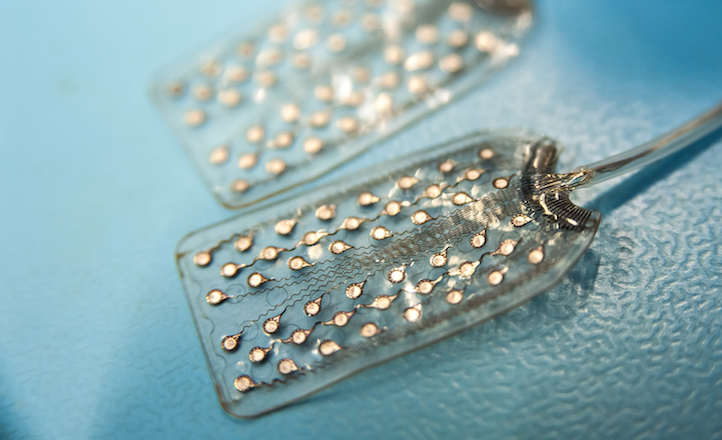Neurotechnology: Connecting to the Brain
Neurotechnology describes the technologies, methods, devices and models that are needed to investigate neuronal networks and their function in the peripheral and central nervous system. It includes the development of treatment options for neuronal diseases and disorders as well as for applications in neuroprothetic and bioelectronics medicine. At the BCF, we have set up collaborations and established expertise to address both, fundamental as well as translational research questions. The laboratories of Stefan Rotter, Ulrich Egert, Tonio Ball, Carola Haas, Ilka Diester, Andreas Schulze-Bonhage, Juergen Hennig and Thomas Stieglitz have combined complementary expertise to cover the different challenges from modeling, signal recording and analysis, optical and electrical interaction with the nervous system and to develop adequate technical devices for in vitro settings, small and large animal models up to first-in-humans clinical trials.
Major challenges in neural interface and implant design are usability and longevity of probes in different laboratories, species and neuroscientic paradigms. Probes have not only been used by members of the BCF but also shared with others to see how knowledge, e.g. about handling such probes, can be transferred to the neuroscientic community. In turn, this experience needs to be included in following generations of neural probes.
Investigations at the material-tissue interface of intracortical probes have addressed the question how exible substrates can be implanted and whether stiff but degradable coatings can alleviate the implantation without negatively influencing glial scarring and neuronal cell death. Influence of material parameters on glial scarring and its influence on longevity is ongoing. In addition, polymer-based optoelectronic probes for optogenetic applications are under development with the focus on long-term stability of implanted waveguides and packages of light sources to contribute to fundamental as well as translational research in this growing field in neurosciences.
Photolithographic and laser-based technologies have been applied to design and develop customized electrode arrays with high channel counts over months. Hermetic packages that house electronics for wireless energy supply and bidirectional data transmission have been assembled with laser-structured, high density arrays. Chronic implantations showed non-redundant signals in high density arrays and signal components up to 2.5 kHz in ECoG data. Neural recording with sophisticated data analysis generated the background to validate computational models of brain functions and delivers informative features for closed-loop control in brain-computer applications, for example towards using machine learning approaches to design controllers for autonomously adaptive stimulation.
Development and assessment of measurement methods at different levels goes hand in hand with implant development. In vitro and in vivo characterization of materials, electrodes and probes deliver deep insights in failure mechanisms. These data serve as input for improvements in device design, process technology development and ideas for novel applications. Our findings led to numerous conference presentations, journal publications and have set the foundations of two start-up companies, CorTec and neuroloop.


